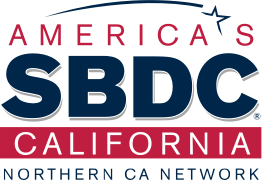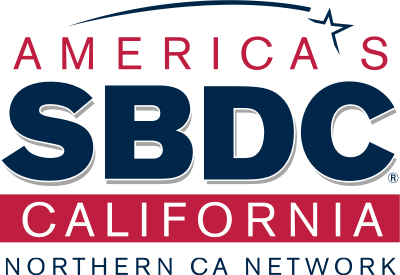Funding
Infrastructure
Grant Program
Child Care New Construction and Major Renovation
The California Department of Social Services (CDSS) has announced a new grant program to support new construction and major renovation of child care facilities.
Don’t miss this opportunity to expand your Child Care Business through this Grant Program:
- Child Care and Development Centers: Up to $1,500,000
- Family Child Care Homes: Up to $100,000
Family child care homes expanding to a commercial child care and development center may apply for the larger grant (up to $1.5 million).
DEADLINE TO APPLY: JANUARY 31, 2023
SBDC has expert Business Advisors who can help you navigate the grant application and throughout the grant process!
The deadline is near, so follow the steps below and EMAIL US (step 3) to get help — at no charge!
Grant Requirements
All applicants must provide the following:
- Complete online grant application as outlined in the request for application provided by the CDSS
- Applicant has proof of site control for the entire term of the grant (long-term lease agreement, deed, property tax statement, or mortgage payment coupon). In some instances, a Letter of Interest (LOI) or Memorandum of Understanding (MOU) may be accepted); Site control can be demonstrated through a lease, rental agreement, deed, property tax statement, or mortgage payment coupon. Site control will also consider the number of years the grant is being used for.
- Applicants must provide 2 competitive bids from prevailing wage contractors. This will require a space plan prepared by an architect or designer.
The New Construction & Major Renovation Grant (IGP-NCMR) supports new construction and major renovation of child care facilities.
3 STEPS TO START
Step 1: Review Grant Requirements + Application
Review the grant requirements at the California Department of Social Services (CDSS) and download the Request for Applications Overview and Instructions. This document will answer many questions.
Step 2: Register for Online Trainings
Live Trainings:
Wed Jan 11, 2023: 10:30am-12pm
Applying for the Major Infrastructure Grant for Child Care Facilities
Learn about:
- Grant program general information
- Expanding a family child care home based facility
- Expanding an existing center based facility
- Expanding from a home based facility into a center based facility.
- The 3 components of applying for the grant: Online application; Facility Lease; and Construction Bids
Thur Jan 12, 2023: 10:30am-12pm
Finding a Location for a Center-based Childcare Facility
Learn about:
- Zoning Restrictions
- Outside Play Areas
- Verification of compliance (Community Care Licensing)
- Using online tools to find a location
- Canvasing local shopping centers
- Working with Real Estate Agents and Brokers
Pre-recorded Info Webinars:
View the appropriate informational webinar appropriate for your childcare operation/type of grant:
*Including family child care homes wishing to expand their operations into a commercial center.
Step 3: Work with a No-Cost Advisor
Get Started NOW. You’ll receive assistance with the CDSS application and help you plan your facility expansion. There is NO COST for support.
Due to the upcoming deadline, please email the program support team directly instead of requesting our services, so that we can fast-track our advising support.
Nick Burton | burton@sbdchelp.org
Nathan Andrea | nathan.sbdc@gmail.com
Is Your Child Care Business Eligible?
Requirement 1
As identified in WIC sections 10310.1(b)(1)(A), eligible Applicants include child care and development and preschool providers* that are not local educational agencies (LEAs), such as public school districts, higher education, county offices of education, or charter schools, and that are one or more of the following:
- A child care facility (both a child care center and a family child care home) serving children through an alternative payment program under WIC Chapter 3 (commencing with section 10225).
- A migrant child care and development program serving children under WIC Chapter 6 (starting with section 10235).A child care facility network serving children through a California state preschool program under Article 2 (commencing with section 8207) of Chapter 2 of Part 6 of Division 1 of Title 1 of the Education Code.
- A child care facility serving children through a general childcare and development program under WIC Chapter 7 (starting with section 10240).
- A family child care home education network serving children under WIC Chapter 8 (starting with section 10250).Child care and development services for children with special needs under WIC Chapter 9 (starting with section 10260).
- A child care facility serving children through a California Work Opportunity and Responsibility to Kids Stage 1, Stage 2, or Stage 3 program under WIC Chapter 21 (starting with section 10370).
- A child care facility serving children through the Emergency Child Care Bridge Program for Foster Children under WIC section 11461.6.
*Child care facilities must be licensed on or before to August 1, 2021 to be eligible for these funds.
Requirement 2
Additionally, 10310.1(b)(1)(A) requires that eligible Applicants include child care and development and preschool providers that are not LEAs and that meet two or more of the following:
- Have a demonstrated need* for expanded access to subsidized child care and development and preschool programs.
- Are located in communities with low incomes as measured by the proportion of children that qualify for state or federal subsidies for child care and development and preschool programs.
- Plan to use grant funding to serve children that qualify for state or federal subsidies for child care and development and preschool programs.
- Serve children from birth to five years of age, inclusive, with exceptional needs in inclusive environments.
- Wish to recover lost capacity (enroll more children) as a result of a state or federally declared disaster.
*”Demonstrated need” is measured by the ratio of children in state and federally subsidized child care and development and preschool programs to eligible children in the Applicant’s service area.
Priority Status
WIC section 10310.1(d) requires that the CDSS give priority for IGP-NCMR funding to both of the following:
- Applicants with a demonstrated need for expanded access to subsidized child care and development and preschool programs, as measured by the ratio of children in subsidized child care and development and preschool programs to eligible children in the Applicant’s service area; and
- Applicants who are currently caring for children in subsidized child care programs described in subparagraph (A) of paragraph (1) of subdivision (b) of WIC section 10310.1 and who are not eligible for federal funding for these purposes.
Types of Organizations
- Applicants may be non-profits, for-profit businesses, or Tribes.
- Faith-based organizations may also apply if the child care curriculum is not faith-based.
- LEAs, public/government agencies, school districts, and higher education colleges are not eligible for this funding.
INELIGIBLE Entities
The following types of entities are not eligible to apply for IGP-NCMR funding:
- LEAs, such as county offices of education, school districts, charter schools and community colleges*
- Public or government entities
- Family, Friend and Neighbor programs
- Applicants who do not serve children from low-income families
- Applicants who do not meet experience and tenure requirements of having at least one child care facility in operation on or before August 1, 2021.
- Applicants/organizations who have been suspended or debarred or are on the federal excluded parties list on the System of Award Management website.
- Child care and development and preschool program contractors who meet any of the conditions:
- The Applicant is on conditional status because of fiscal or programmatic non-compliance as described in Title 5 of the California Code of Regulations (5 CCR) section 18303 or 18304.
- If holding a State contract under which the California Department of Education (CDE) or the CDSS has conducted a compliance review pursuant to 5 CCR section 18023, and the Applicant has failed to cure items of fiscal and programmatic non-compliance identified in the review within 12 months of the issuance of the compliance review report.
- At the State’s discretion, an application may be declined due to a notice of deficiency issued by CDE and/or the CDSS, or if an Applicant is operating with a provisional license, suspended or revoked license, or never obtained a license.
- Current and former CDE and/or CDSS child care and development and preschool program contractors who meet any of the following conditions:
- The Applicant has an outstanding accounts receivable balance with the CDE and/or the CDSS.
- The Applicant has a delinquent audit with the CDE and/or the CDSS pursuant to 5 CCR section 18073.
- The Applicant had a previous contract with CDE and/or the CDSS that was terminated or not continued for fiscal or programmatic noncompliance as described in 5 CCR sections 18303 or 18304 within three years immediately preceding the date this RFA was posted.
- The CDE and/or the CDSS did not make an offer of continued funding because the Applicant was terminated within three years before the date of this RFA’s posting.
*As stated in WIC section 10213.5(aj), a “Local educational agency” means a school district, a county office of education, a community college district, or a school district acting on behalf of one or more schools within the school district.
Eligible Projects
Overview
WIC section 10310.1(b)(2) establishes the eligible purposes for the CCDD-IGP program generally. For the IGP-NCMR, eligible construction and renovation projects only include new construction and major renovations to increase capacity, as follows:
- Construction of new child care and development and preschool facilities to increase capacity or recover lost capacity as a result of a state or federally declared disaster.
- Renovation of existing child care and development and preschool facilities to increase capacity (enroll more children) or recover lost capacity (enroll the same or close to the same number of children from before the disaster) as a result of a state or federally declared disaster. Major renovations can also be to make existing child care and development and preschool facilities more resilient for future natural disasters.
If the Applicant meets one or more of the above requirements for their project, WIC section 10310.1(e) states that IGP-NCMR infrastructure grants may be used for any of the following activities:
- One-time infrastructure (construction) costs, including, but not limited to, universal design facility renovations, retrofitting to meet licensing requirements, the cost of design, engineering, testing, inspections, plan checking, construction management, evaluation and costs relating to the removal of hazardous substances at a new or existing site, demolition, construction, landscaping, or other related costs as determined by the department.
Allowable Grant Expenditures (Spending)
The allowable new construction or major renovation activities may include but are not limited to:
- New construction; or
- Major renovation of existing buildings or homes that include structural changes to the foundation, roof, floor, exterior or load-bearing walls of a child care facility, or the extension of an existing child care facility to increase its floor area; or extensive alteration of a child care facility such as to significantly change its function and purpose, even if such a renovation does not include any structural changes.
The following list provides examples of allowable uses of grant funds. This is not a comprehensive list.
- Renovation/construction costs to expand from a small to a large family child care home.
- Significant water leak mitigation that is necessary to reduce an imminent risk to health and safety, such as a full roof repair, or where water leaks affect the foundation, walls, drywall, or flooring.
- Predevelopment and planning costs
- Architectural plans/drawings/designs
- Project management costs
- Fixed equipment (washers, dryers, refrigerators, dishwashers, stoves) incorporated into the major renovation project
- Environmental reviews, hazard testing and mitigation
- The Department of General Services’ Division of State Architect fees if applicable (e.g., if leasing a facility on a school district site)
- Demolition
- Green building standard upgrades (at the CDSS discretion, solar may be allowed if the operator owns building)
- Landscaping
- Plumbing; heating, ventilation, and air conditioning (HVAC)
- Electrical
- Flooring
- Fire safety alarms and suppression systems (Inspection, system installation, upgrades, sprinklers, fire rated doors, Underwriters’ Laboratories (UL) 300 stove hoods for commercial stoves)
- Americans with Disabilities Act (ADA) for indoor and outdoor spaces
- Playground/outdoor (equipment, shade, surfacing, fencing/hazard enclosure, gates, landscaping, misting systems, irrigation, garden/green upgrades)
- Kitchens and equipment, including commercial appliances (if used for children)
- Child sized fixtures
- Storage (Indoor and outdoor)
- Sound proofing
- Security gates and systems
- Putting solar panels on a new facility or an expanded facility
Unallowable Grant Fund Expenditures (Spending)
The following costs are not allowable uses of IGP-NCMR grant funds:
- Acquisition, such as purchasing a home or a site
- Administrative or indirect costs
- Bonus payments for early completion of work
- Contingency costs (i.e., a percentage of funds set aside for unforeseen problems)
- Classroom furnishings
- Costs connected to contractor claims against the Applicant
- Consumables or items with short lifespans (such as food, drinks, paper, etc.)
- Costs incurred for work completed prior to August 1, 2021.
- Remediation of environmental contamination as result of negligence
- Grant writing or expenses incurred in the writing or development of the CCDD-IGP Program application
- Extended warranties for items not included in project proposal
- Fines or penalties incurred by the violation of federal, state, or local laws, or ordinances or regulations
- Freestanding equipment or supplies such as books and materials for the dramatic play areas to meet curriculum needs
- In-house labor (i.e., construction must be completed by a licensed contractor)
- Insurance
- Interest charges or payments on bonds or indebtedness required to finance project costs
- Internet provider service costs
- Lease and/or rental payments
- Legal fees and costs
- Libraries, staff rooms, or other areas of renovation that do not directly serve children
- Marketing
- Meeting, workshop, training, food, or beverage expenses
- Non-fixed equipment (i.e., equipment not being installed as part of the new construction or major renovation)
- Relocation/moving costs associated with the project for which the grant is being used
- Out-of-state travel
- Overhead expenses such as costs for rental/lease of space, utilities, office supplies, and other miscellaneous project costs
- Purchase or lease of vehicles
- Startup costs, including operations/staff salaries
- Tax consultant
- Technology systems (Computers, phones, media devices, internet services)
- Toys
- Travel or per diem expenses
NOTE: This information is from the California Department of Social Services (CDSS). The SBDC is not responsible for its accuracy; to ensure you have the most up-to-date grant information and requirements, see the CDSS website.
$100K
Up to $100,000 for Family Child CAre Homes
$1.5M
Up to $1.5 million for Center based child care centers or family child care homes wishing to expand their operations into a commercial center


